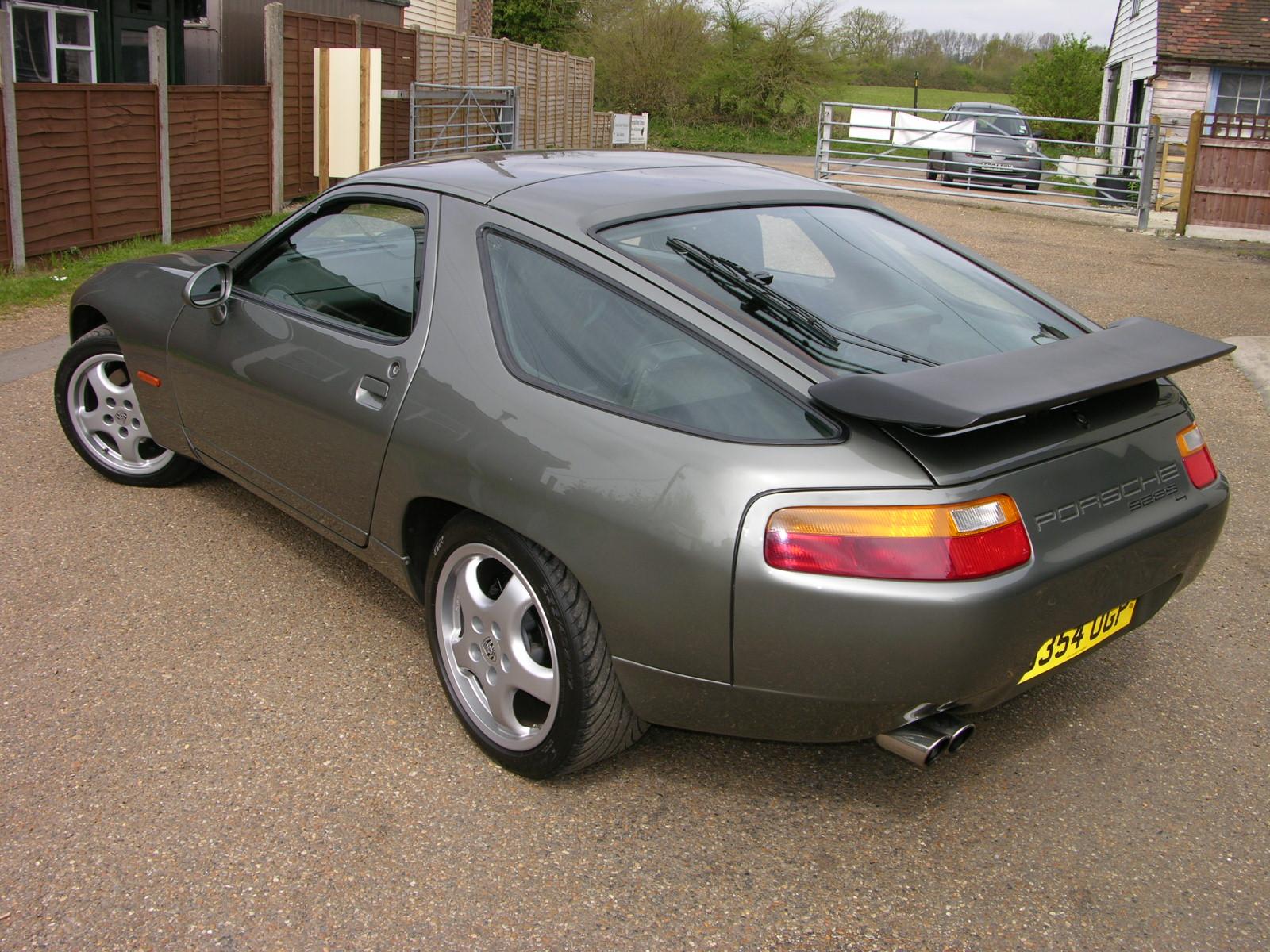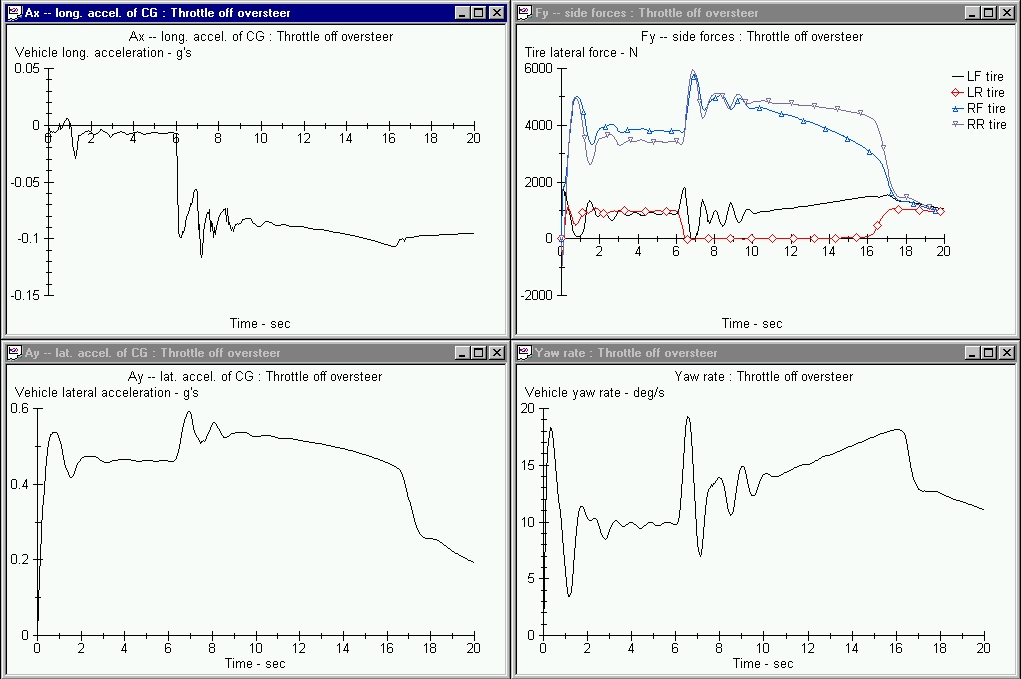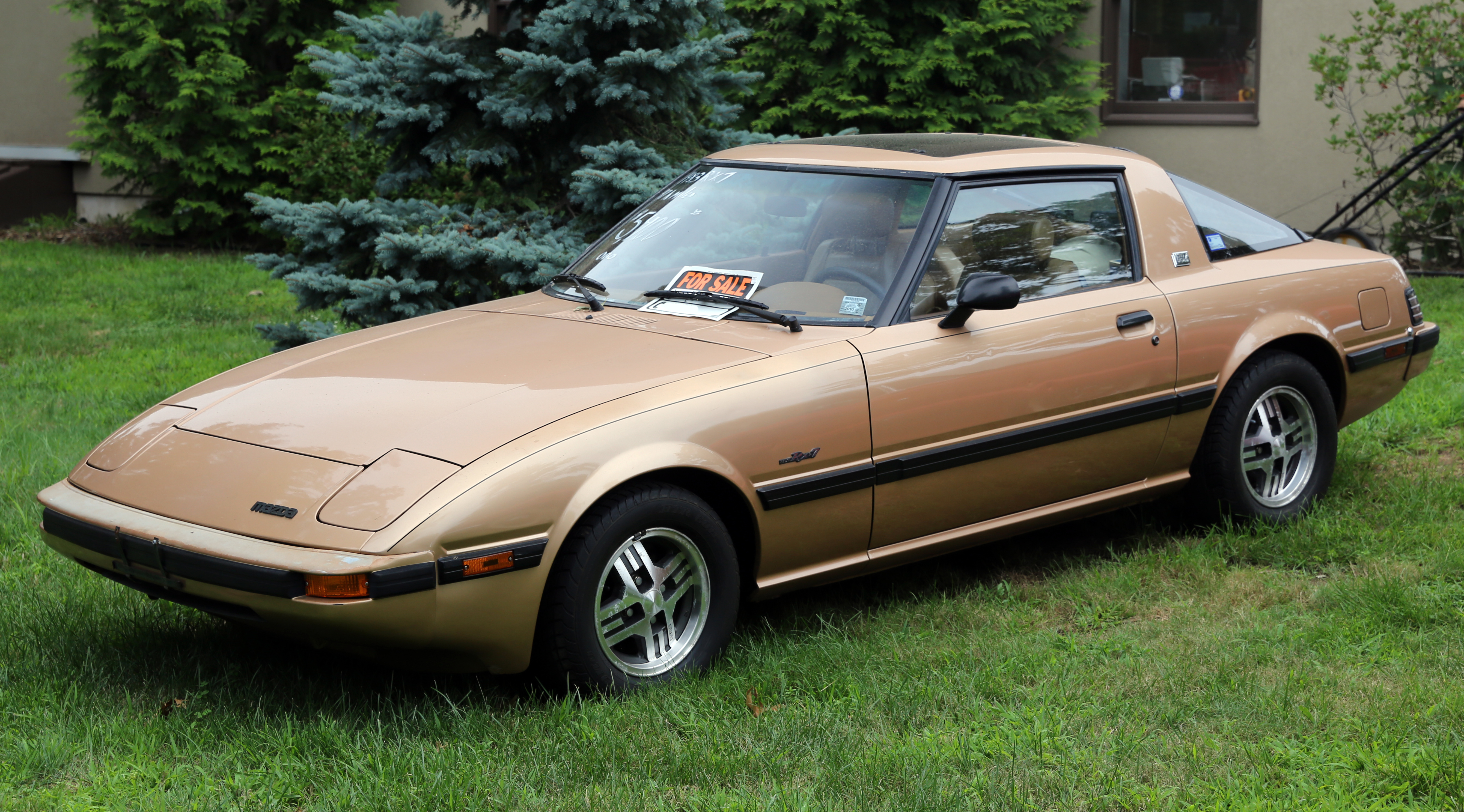|
Weissach Axle
The Weissach axle (pronounced 'Vise-' as in 'advise' and '-ach' with guttural 'ch') is a rear suspension arrangement first used in the Porsche 928 (1978) and echoed in subsequent production models. The fully developed version was used in a Porsche 993 (911) in 1994. The goal of the Weissach axle was to eliminate lift-off oversteer by allowing the rear suspension to adjust itself during cornering manoeuvres and handle both longitudinal and lateral forces. Name It is named after the town of Weissach, where the axle was developed at the Porsche research centre.http://content3.eu.porsche.com/prod/company/history.nsf/deugerman/milestonesthe_seventies, (Retrieved Oct. 20. 2007) Weissach is also a backronym for ''Winkel einstellende, selbst stabilisierende Ausgleichs-Charakteristik'' (angle-adjusting, self-stabilizing equalization characteristic) Description The Weissach axle is a variant of the semi-trailing arm suspension. The tendency of a vehicle to oversteer when decelerating ... [...More Info...] [...Related Items...] OR: [Wikipedia] [Google] [Baidu] |
Porsche 928
The Porsche 928 is a luxury grand tourer produced by Porsche AG of Germany from 1978 until 1995. Originally intended to replace the company's iconic 911, the 928 combined the power, poise, and handling of a sports car with the refinement, comfort, and equipment of a luxury sedan. The 928 became the top-of-the-line production car sold by Porsche. Porsche executives believed such a flagship would have wider appeal than the compact 911. The 928 has the distinction of being the company's first production V8-powered model and its only coupé powered by a front-mounted V8 engine. Conception By the late 1960s, Porsche had firmly established itself as a manufacturer of high-performance sports cars. In the wake of the 1970s oil crisis, executives, including owner Ferdinand Porsche, were beginning to consider adding a more fuel-efficient luxury touring car to the line-up. Managing director Ernst Fuhrmann was pressuring Ferdinand to approve development of the new model due to concern ... [...More Info...] [...Related Items...] OR: [Wikipedia] [Google] [Baidu] |
Porsche 993
The Porsche 993 is the internal designation for the Porsche 911 model manufactured and sold between January 1994 and early 1998 (model years 1995–1998 in the United States), replacing the 964. Its discontinuation marked the end of air-cooled 911 models. The 993 was much improved over and quite different from its predecessor. According to Porsche, every part of the car was designed from the ground up, including the engineAutoTraderClassics.com — Article Finding Porsche's best road car — Porsche 911S vs 993. and only 20% of its parts were carried over from the previous generation. Porsche refers to the 993 as "a significant advance, not just from a technical, but also a visual perspective." Porsche's engineers devised a new light-alloy subframe with coil and wishbone suspension (an all new multi-link system, Weissach axle), putting behind the previous lift-off oversteer and making significant progress with the engine and handling, creating a more civilized ca ... [...More Info...] [...Related Items...] OR: [Wikipedia] [Google] [Baidu] |
Lift-off Oversteer
Lift-off oversteer (also known as snap-oversteer, trailing-throttle oversteer, throttle off oversteer, or lift-throttle oversteer) is a form of oversteer in automobiles that occurs while cornering when closing the throttle causes a deceleration, causing the vertical load on the tires to shift from the rear to the front, in a process called load transfer. This decrease in vertical load on the rear tires causes a decrease in the lateral force they generate, so that their lateral acceleration (into the corner) is also decreased. This causes the vehicle to steer more tightly into the turn, hence oversteering. In other words, easing off the accelerator can cause the rear tires to lose traction, with the potential for the car to leave the road tail first. Dynamics The graphs to the right show the simulated effect of lifting off the throttle in the middle of a left turn. The transients in the first couple of seconds are due to the test, in which a step steer input (wheel angle) is a ... [...More Info...] [...Related Items...] OR: [Wikipedia] [Google] [Baidu] |
Weissach
Weissach is a municipality in the district of Böblingen in Baden-Württemberg in Germany. The Weissach axle is named after the town, where the research centre of Porsche is located. The Porsche 918 Spyder supercar was developed in Weissach; Porsche offered an optional "Weissach package" that featured reduced weight and improved aerodynamics. Erich Hartmann (born April 19, 1922 in Weissach; died September 20, 1993 in Weil im Schönbuch Weil im Schönbuch is a municipality in the Böblingen district, middle Neckar region, Stuttgart governmental district, Baden-Württemberg, Germany. Its unusual name (''weil'' means "because" in German) is derived from the presence of a Roman v ...) was a Luftwaffe pilot in World War 2. With 352 confirmed kills, he was the most successful fighter pilot in the history of air combat. Mayors * 1948–1972: Herrmann Kempf * 1973–1997: Wolfgang Lucas * 1997–2005: Roland Portmann * 2005–2006: Reinhard Riesch * 2006–2014: Ursula Kreutel ... [...More Info...] [...Related Items...] OR: [Wikipedia] [Google] [Baidu] |
Porsche
Dr. Ing. h.c. F. Porsche AG, usually shortened to Porsche (; see below), is a German automobile manufacturer specializing in high-performance sports cars, SUVs and sedans, headquartered in Stuttgart, Baden-Württemberg, Germany. The company is owned by Volkswagen AG, a controlling stake of which is owned by Porsche Automobil Holding SE. Porsche's current lineup includes the 718 Boxster/Cayman, 911 (992), Panamera, Macan, Cayenne and Taycan. History Origin Ferdinand Porsche (1875–1951) founded the company called "Dr. Ing. h. c. F. Porsche GmbH" with Adolf Rosenberger and Anton Piëch in 1931. The main offices was at Kronenstraße 24 in the centre of Stuttgart. Initially, the company offered motor vehicle development work and consulting, but did not build any cars under its own name. One of the first assignments the new company received was from the German government to design a car for the people; that is, a '' Volkswagen''. This resulted in the Volkswagen Beet ... [...More Info...] [...Related Items...] OR: [Wikipedia] [Google] [Baidu] |
Backronym
A backronym is an acronym formed from an already existing word by expanding its letters into the words of a phrase. Backronyms may be invented with either serious or humorous intent, or they may be a type of false etymology or folk etymology. The word is a portmanteau of ''back'' and ''acronym''. An acronym is a word derived from the initial letters of the words of a phrase, such as ''radar'' from "''ra''dio ''d''etection ''a''nd ''r''anging". By contrast, a backronym is "an acronym deliberately formed from a phrase whose initial letters spell out a particular word or words, either to create a memorable name or as a fanciful explanation of a word's origin." Many fictional espionage organizations are backronyms, such as SPECTRE (''sp''ecial ''e''xecutive for ''c''ounterintelligence, ''t''errorism, ''r''evenge and ''e''xtortion) from the James Bond franchise. For example, the Amber Alert missing-child program was named after Amber Hagerman, a nine-year-old girl who was abduct ... [...More Info...] [...Related Items...] OR: [Wikipedia] [Google] [Baidu] |
Trailing Arm
A (semi) trailing-arm suspension, sometimes referred to as (semi) trailing-link is a vehicle axle or wheel suspension design in which one or more horizontal arms (or "links"), perpendicular to and forward of the axle, are connecting the axle or wheels with pivot joint(s) ahead of them, on the structure ( unibody or chassis) of a motor vehicle. These are typically used on the rear axle or wheels of a vehicle, but also found in aircraft landing gear. Leading arms are similar horizontal arms, perpendicular to the axle, but connecting the wheels to the vehicle structure via pivot joints ''to the rear'' of them. These are typically used on the front axle or wheels, as on the Citroën 2CV and its derivatives, and on the Citroën DS, as well as on the M422 Mighty Mite jeep. Types Trailing-arm Trailing-arm designs in live axle setups often use just two or three links and a Panhard rod to locate the wheel laterally. A trailing arm design can also be used in an independent susp ... [...More Info...] [...Related Items...] OR: [Wikipedia] [Google] [Baidu] |
Oversteer
Understeer and oversteer are vehicle dynamics terms used to describe the sensitivity of a vehicle to steering. Oversteer is what occurs when a car turns (steers) by more than the amount commanded by the driver. Conversely, understeer is what occurs when a car steers less than the amount commanded by the driver. Automotive engineers define understeer and oversteer based on changes in steering angle associated with changes in lateral acceleration over a sequence of steady-state circular turning tests. Car and motorsport enthusiasts often use the terminology more generally in magazines and blogs to describe vehicle response to steering in a variety of maneuvers. Vehicle dynamics terminology Standard terminology used to describe understeer and oversteer are defined by the Society of Automotive Engineers (SAE) in document J670SAE International Surface Vehicle Recommended Practice, "Vehicle Dynamics Terminology", SAE Standard J670, Rev. 2008-01-24 and by the International Organization ... [...More Info...] [...Related Items...] OR: [Wikipedia] [Google] [Baidu] |
Toe (automotive)
In automotive engineering, toe, also known as tracking, is the symmetric angle that each wheel makes with the longitudinal axis of the vehicle, as a function of static geometry, and kinematic and compliant effects. This can be contrasted with steer, which is the antisymmetric angle, i.e. both wheels point to the left or right, in parallel (roughly). Negative toe, or toe out, is the front of the wheel pointing away from the centreline of the vehicle. Positive toe, or toe in, is the front of the wheel pointing towards the centreline of the vehicle. Historically, and still commonly in the United States, toe was specified as the linear difference (either inches or millimeters) of the distance between the two front-facing and rear-facing tire centerlines at the outer diameter and axle-height; since the toe angle in that case depends on the tire diameter, the linear dimension toe specification for a particular vehicle is for specified tires. Description In a rear-wheel drive vehic ... [...More Info...] [...Related Items...] OR: [Wikipedia] [Google] [Baidu] |
Mazda RX-7
The Mazda RX-7 is a front-engine, rear-wheel-drive, rotary engine-powered sports car that was manufactured and marketed by Mazda from 1978 until 2002 across three generations, all of which made use of a compact, lightweight Wankel rotary engine. The first generation of the RX-7, SA (early) and FB (late), was a two-seater 2 door hatchback coupé. It featured a 12A carbureted rotary engine as well as the option for a 13B with electronic fuel injection in later years. The second generation of RX-7, known as the FC, was offered as a 2-seater coupé with a 2+2 option available in some markets, as well as in a convertible bodystyle. This was powered by the 13B rotary engine, offered in naturally aspirated or turbocharged forms. The third generation of the RX-7, known as the FD, was offered a 2+2-seater coupé with a limited run of a 2-seater option. This featured a sequentially turbocharged 13B REW engine. More than 800,000 were manufactured over its lifetime. __TOC__ First gene ... [...More Info...] [...Related Items...] OR: [Wikipedia] [Google] [Baidu] |




